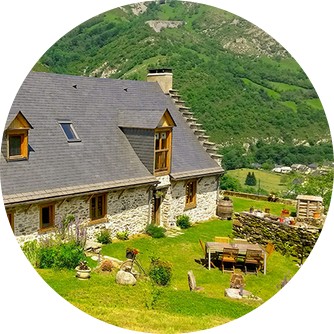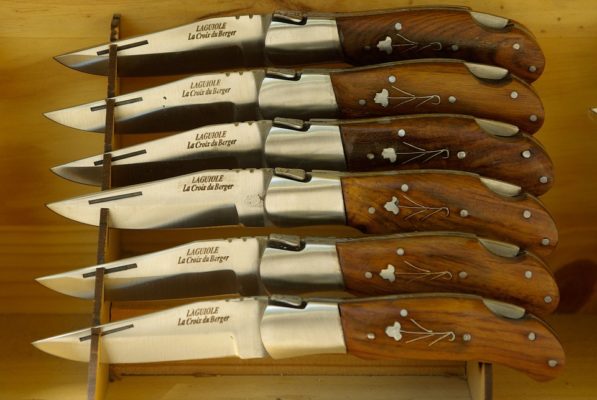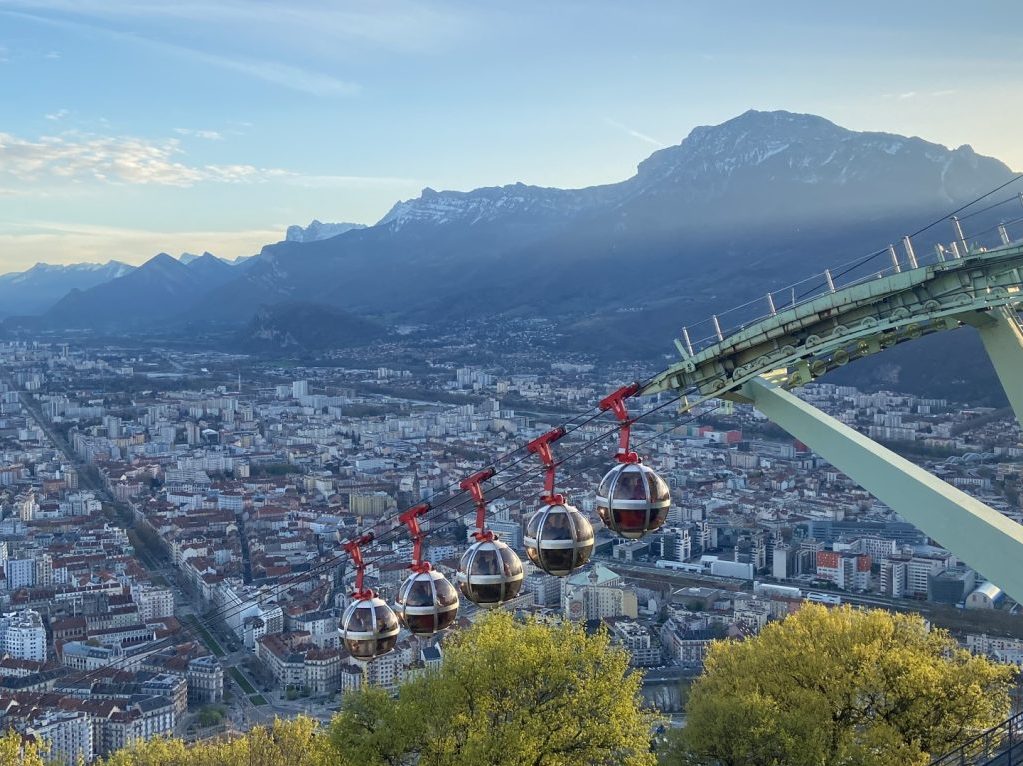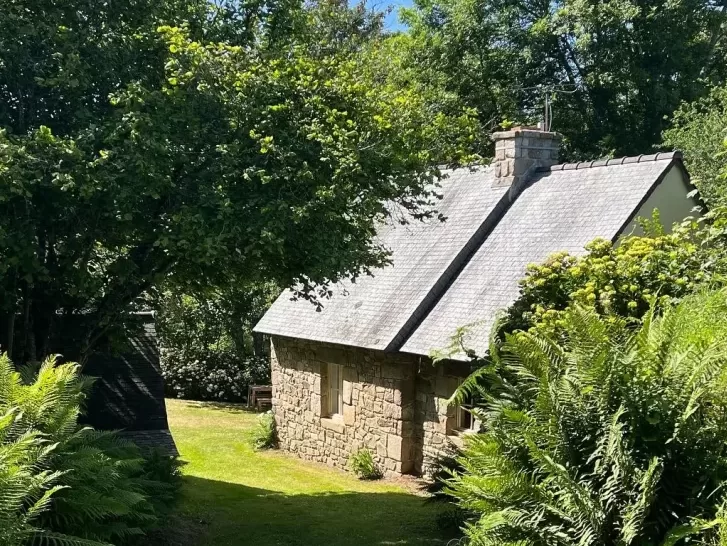The savvy traveller’s guide to France – Occitanie region
Occitania, or ‘Occitanie’, is the third largest region of France: it is bigger than the Netherlands, Belgium and Luxemburg all put together! Even Germany, which has some large regions, doesn’t have a region as big as Occitania. Now that you can picture its size, let’s talk about why you really should go to Occitania while you’re travelling through France.
As you can guess, there are many of places of interest in Occitanie and also secret places where you can immerse yourself in the local culture and vibrant history. Many places where you will be delighted by new tastes and sensations and typical landscapes of the south of France are to be discovered
Why go to Occitanie?
If Occitanie is my favourite region, and that is mainly due to its landscapes. The word ‘landscape’ takes on a new dimension when you are travelling through Occitanie: mountains, rivers, the Mediterranean Sea, cereal and lavender fields, grazing lands, and the sky both as temperamental and generous as its inhabitants.
You can count on the sun and the twin winds: the ‘Mistral’ and ‘Tramontane’, to put a smile on your face 300 days a year. The climate is wonderful all year round – except in the Pyrenean area, where you can enjoy snow activities and thermal baths in Luchon in winter, however. The excellent weather is one of the reasons why locals have such warm personalities and seem to be happy all day. It’s even possible to feel welcome long before you return to the Occitania region. I can vouch for that!
Two main cities
In the new Occitanie region, there are now two key cities: Toulouse and Montpellier – which will for sure create future conflict over which city is the best. Interestingly, both cities are leaders in technology and innovation, as the Occitanie region is our little Silicon Valley.
Toulouse
Toulouse also called the pink city, is the larger of the two cities and the official prefecture of Occitanie. The pink buildings are famous and in the evening, as the sun is setting, the walls ‘catch fire’ displaying stunning colours as the city switches from the quiet day life to lively nightlife.
In summer, which fortunately is half of the year in the Occitanie region, nothing is better than going to the local markets early in the morning to buy fresh and local products and meeting and chatting with the locals while you’re there.
‘Must-dos’ in Toulouse:
- Visit the market in Castanet-Tolosan: it’s one of the oldest and most authentic markets near Toulouse and the perfect meeting place for les gourmands.
- Take a walk in the streets of Toulouse in the evening when the air is fresher, and admire how the lights transform the buildings.
- Toulouse is the European capital of aeronautics and space, so if there’s one experience not to be missed in Toulouse, it’s La Cité de l’espace. Unique in Europe, it’s a fun and educational adventure park about space. You can experience life as an astronaut with the Moon Runner and defy gravity. You can see the Ariane V rocket replica as well as the Mir space station and the Soyouz capsule, then it’s possible to follow Thomas Pesquet’s tracks on his space mission and see Saturn during daylight! There is no other place in the world like it.
 Montpellier
Montpellier
Nonetheless, my preference lies with Montpellier with its car-free old city centre. The city is depicted as a traditional village which has grown into a bigger village with its narrow cobblestone streets, French architecture tinged with a Latin and Arabic influence, and people sitting on café terraces even in winter.
The city and the people of Montpellier represent a multicultural history, a deep belief that joie de vivre is a remedy against intolerance and racism, and a complex network of communities. Last but not least, Montpellier is a beautiful city with a population of ~250k, in a stunning region.
My advice: get lost in the streets, wander around, read a French author’s book while sitting on a café terrace and get a feel for the city.
North of the city, the La Vis river flows through the valley to a place called Le cirque de Navacelles. From the village on top of the canyon, listed by Unesco as a World heritage site, the view of this huge natural amphitheatre is spectacular and will make you feel simultaneously humble and powerful.
‘Must-dos’ in Montpellier:
- Enjoy high-quality exhibitions at Le pavillon populaire (photography) or at Le carré Sainte Anne (contemporary art), both with free entry.
- Take a walk in the botanical garden, the most ancient royal garden of France, and look for the so-called ‘mountain’, an artificial mound. Hint: you will find it at the heart of the garden.
- Have a break at La cocotte, a cosy, tiny, tasty restaurant in the centre of Montpellier: all dishes are served in a ‘cocotte’ and with a slightly kitschy ambience.
Best places to stay
In the Occitanie region you will never have any problem booking great accommodation: if you’ve ever dreamt about sleeping in a castle, a mansion, an old watermill or a renovated shed/sheepfold, you can make your dreams come true as there are a wide range of beautiful places to stay during your journey.
1. Le Moulin de Guillauma
On your way to the western part of Occitanie, you can stay somewhere unusual: Le Moulin de Guillauma (Gers). This watermill is entirely renovated, in a natural environment for a unique experience. Its proximity to the river is perfect for fishing. There’s also a large tree garden for relaxing and plenty of activities for the kids. This place is the perfect family stay in Occitanie.
Le Moulin de Guillauma32410 Castéra-Verduzan,
France

2. La Grange de Gassiole
This old shed is my favourite place to stay. Located in the middle of the Pyrenees, La Grange de Gassiole is unbelievable with its mountain views, fresh air, and charming lodging.
The shed is entirely renovated using materials from the past which takes you back to the days when shepherds were kings of the mountain.
La Grange de GassioleChemin de la Hosse,
Galade, 65710 Campan, France
3. La Vigne et le Blé
La Vigne et le Blé is a cosy place to stay and discover the region between Toulouse and Montauban. Surrounded by wheat and sunflower fields, this accommodation is very calm with a pool and a spa to relax in a delightful atmosphere. The owners are willing to share their passion for wine by organising a wine tasting for guests!
La Vigne et le BléRue Gérard Roques,
81630 Salvagnac, France
4. Le Château de Jonquières
Montpellier is a popular destination and there are many hotels in the city. Another superb accommodation option is, le Château de Jonquières, an ancient lord’s home turned into a family mansion with two hectares of Mediterranean gardens in the middle of the owner’s vineyards.
Le Château de Jonquières34725 Jonquières, Hérault
France
Best places for gastronomy lovers
I can’t write an article on any region of France without talking about food and wine. In Occitanie – as with every region – gastronomy is a way of life.
Il n’y a de bonheur pour l’homme sous le soleil qu’à manger et à boire, et à se réjouir
– A man has no better thing under the sun, than to eat, and to drink, and to be merry.
From the east to the west of the region, we are lucky to have lots of talented chefs who specialise in both local and traditional food such as oysters from the Thau lagoon, Cod Brandade, melons and plums, goat cheese and sweet onion, Pyrenean lamb, Gascon beef, foie gras and natural wine…
With such culinary diversity, don’t expect to pick up every flavour straight away. It can take some time to become a genuine Occitanie gastronomic expert. To help you get there faster, I have selected four restaurants and one domain where you can test your tasting skills in the best environment, just like a local.
1. L’auberge du Vieux-Puits
At L’auberge du Vieux-Puits, in Fontjoncouse, a village of 150 inhabitants, the 3-star chef Gilles Goujon cooks speciality dishes from the Corbières area (Aude-11) such as a Goshawk ’palombe’ filet.
L’auberge du Vieux-Puits5, Avenue St Victor
11360 Fontjoncouse
France
2. Le Phoebus
Le Phoebus, located in Foix (Arièges-09), offers a stunning view of a castle as well as an extraordinary duck and foie gras menu that you will remember forever.
Le Phoebus3 cours Irénée Cros
09000 Foix
Ariège-Pyrénées, France
3. Le Puits de Saint Jacques
At le Puits de Saint Jacques, don’t miss the truffle menu during the one-month truffle season: February; or be adventurous with the fresh-from-the-market menu.
Le Puits de Saint JacquesAvenue Victor Capoul,
32600 Pujaudran, France
4. La table de Haute-Serre
La table de Haute-Serre (Lot-46) is run by a skilful chef who combines terroir with contemporary cuisine. It is located in a domain, le château de Haute-Serre, a famous vineyard. The winery and the restaurant together to create a unique, gastronomic experience.
La table de Haute-SerreChâteau de Haute Serre,
46230 Cieurac, France
Immersive experiences with locals
1. Winemakers of the Occitanie
Food is nothing without a matching wine, and fortunately, the Occitanie region has a wide variety of wonderful wine.
Do you know that the Languedoc-Roussillon vineyard is the oldest and the biggest in Europe? Winemakers are proud of their work and are willing to talk for hours about wine. So just ask them, you will be rewarded and gain knowledge. My favourite place would be the renowned Domaine Cazès, which specialises in Muscat and sweet wines.
Domaine Cazès4 rue Francisco Ferrer,
BP 61, 66602 Rivesaltes Cedex, France
2. Artisans of the Occitanie

Just like the winemakers, other artisans of the Occitanie region are keen to present their work and show you around their workshops. It is a unique opportunity to learn more about France with skilled local artists: knife makers, potters, and glove and hat makers.
In the village of Laguiole, you can learn how to craft your own knife!
La Maison du Laguiole2 Place de la Patte d’Oie
12210 Laguiole, France
And there is even a soap factory in Toulouse (Zenzitude) where you are invited to craft your own natural soap to take home.
Zenzitude10 place du commerce
31750 Escalquens, France
So there you have it, the best places to truly immerse yourself in Occitanie: visit, explore, eat, drink and stay in the Occitanie region!
Have you ever been to any of the places listed above? What is your favourite thing about the Occitanie region? Share your experiences with us below!
Acknowledgement:
This article was written by Laure Giraud – in conjunction with the MyFrenchLife™ team Image credits:
1. ‘Lavender Fields’ (feature image) by Rowan.M.McDonald, via wikimedia commons
2. ‘Occitanie (administrative region)’ by Raymond Trencavel, via wikimedia commons.
3. ‘Toulouse capitole’ by Abxbay, via wikimedia commons.
4. ‘Montpellier’ by Fritz Geller-Grimm, via wikimedia commons.
5. ‘La Grange de Gassiole’, via La Grange de Gassiole website.
6. ‘Torchon of Fois gras’, via flickr.
7. ‘Dessert’, via Restaurant Le Phoebus website.
8. ‘Languedoc Roussillon vineyards’, via wikimedia commons.
9. ‘Laguiole Knife’ by Jackmac34, via pixabay.



 Montpellier
Montpellier 







Toulouse and Montpellier are beautiful cities, but one should not die without having seen Carcassonne. Not only is the fortress city one of the amazing sights of Europe but the countryside is gorgeous, the food and wine are delicious and there are many other things to do (biking along the Canal du Midi, spelunking, enjoying the summer concerts, checking out ruins….)
And those are true words ‘Taste of France’ 🙂
I think we need a separate article to cover Carcassone, don’t you? Are you volunteering – oops sorry that’s a bit cheeky – not meant to be rude <3
Having lived for 7 months in Montpellier in 2008-09 and then for 2 years (Nov 2014 – Jan 2017) in Mazamet in the Tarn Department of Occitanie, I feel well qualified to say that this region is a fabulous region and well worth a long visit. I also find it hard to choose between Montpellier & Toulouse, as they are both lovely but very different to each other. Visiting towns along the Canal du Midi – the amazing 17th century canal that stretches from Toulouse to the Mediterranean Sea near Sete; is a must with recommendations being Montady and Esserune with the 13th century circular drained swamp and the Roman ruins, Le Somail with It’s famous antiquarian bookshop, beautiful buildings and lovely lunch spots and the 9 staircase lock between there and Beziers. Head back inland towards Carcassonne and Minerve, a fabulous Cathar hilltop village with spectacular views. Further north into the heart of the Tarn is Lautrec a town famous for It’s rose garlic – check out the fabulous garlic sculptures during their garlic festival in August each year. But Lautrec has much more – a sabot maker, a restored working windmill with canvas sails, beautiful views and an excellent cafe/restaurant called Plume Cafe which also has live music events. A bit north of Lautrec is Albi, capital of the Tarn Region, birthplace of the artist Toulouse Lautrec and also home of the explorer La Perouse. Albi has a magnificent cathedral, built by the Catholics after defeating the Cathars, a fabulous old half timbered / red brick city (often more “Rose coloured” than Toulouse), river cruises, the Toulouse Lautrec Museum, an excellent public library, centre ville gardens, etc, etc. A short way north is the famous hill top village of Cordes-sur-ciel, one of the most beautiful villages in France. I still have to mention further south towards the Pyrenees and the fabulous Cathar hilltop ruined castles, the beautiful medieval village of Mirepoix, the thermal towns on the edge of the Pyrenees etc. And of course there are the beautiful foods and wines of the region – another article in themselves, but you can’t escape the Cassoulet of Toulouse region, the foie gras, the duck and the Langedoc wines, esp their aperitif Muscat or their rosés. I can wax lyrical for ages on this region. Hope other people get to explore at least a little bit of it.
Pamela, just wanted to thank you warmly for your comment – I wish all guides were like what you have written! This is so informative and such a range of the suggestions – I just had to leave a note of appreciation here. Thank you so much! Greetings from London / Anna
Thank you all, it’s very helpful information as I am visiting the region soon! Any suggestions for what to pack for a month long staying in March?
Thanks 😊
An umbrella of course … just kidding. And assuming you are here now, so nice sunny weather at the moment. We’re off to Aix tomorrow for some much needed shopping. Let us know how your trip is going so far. MJ